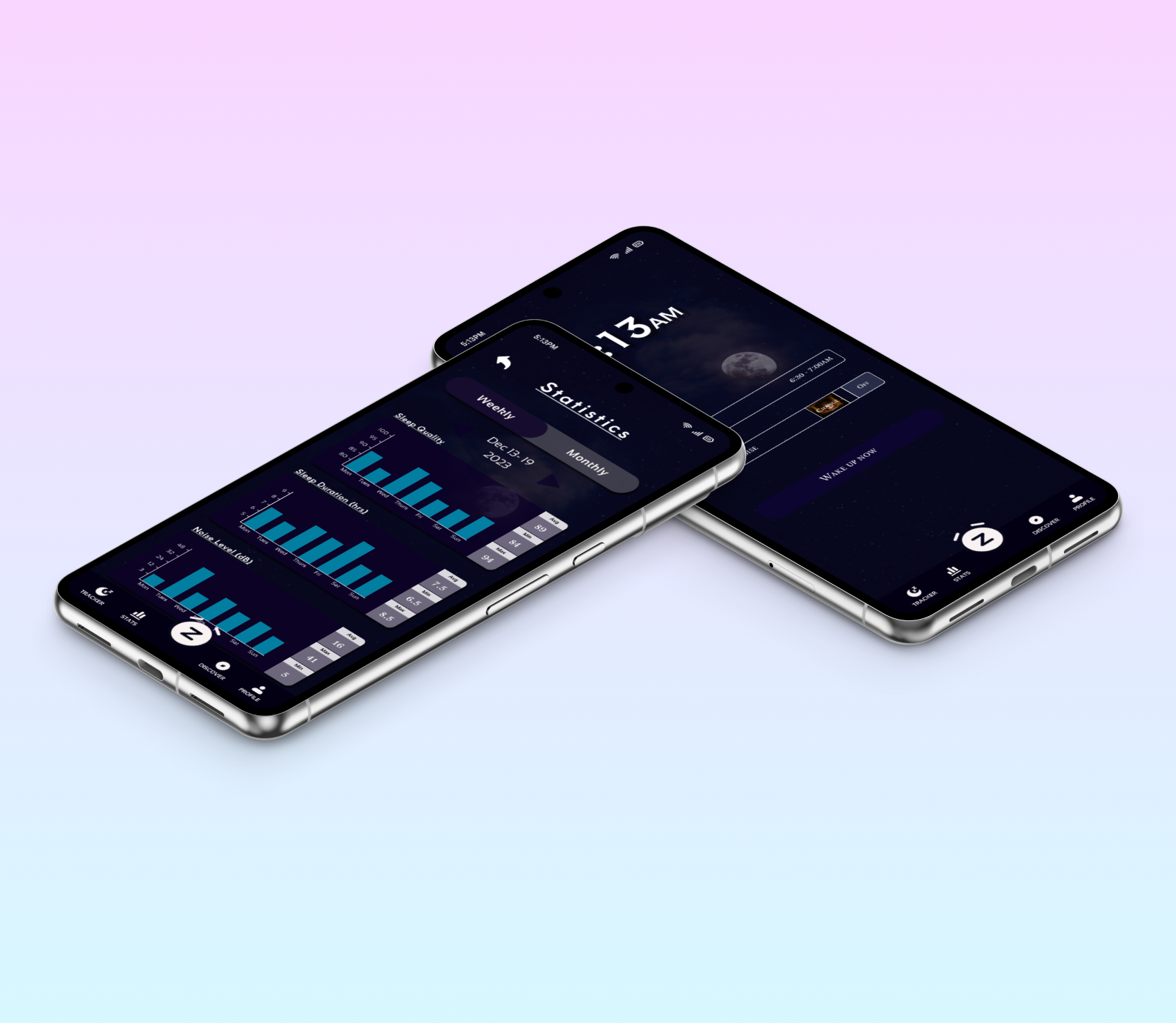TranquilZ
Bringing clarity and tranquility to the journey towards better sleep
Many individuals struggle with achieving restful sleep due to issues like insomnia, inconsistent sleep patterns, and difficulty falling asleep. Current sleep apps lack personalized approaches and fail to effectively address individual sleep needs, leaving users feeling frustrated and unable to improve their sleep quality.
Challenges
Solution
To tackle these challenges, I designed Tranquilz, a mobile app designed specifically to enhance sleep quality. Tranquilz focuses on delivering personalized sleep recommendations, relaxation techniques, and sleep tracking features to empower users in achieving better sleep patterns and overall well-being.
Overview
-
UX Researcher
UI Designer
Product Designer
-
Figma
FigJam
-
6 Weeks
Analyzing Research and Defining Objectives
What does the current market landscape look like?
Market Analysis
I extensively studied the landscape of sleep apps, examining their features, functionalities, and user experiences to gather insights and identify potential areas for enhancement and innovation. This comprehensive understanding guided me in refining my research approach, enabling me to gather a wealth of high-quality insights.
How do users approach sleep and sleeping habits?
User Interviews
I conducted in-depth user interviews with five individuals to gain insights into their sleep habits, preferences, and behaviors, aiming to understand how they approach sleep, including their bedtime routines, environmental factors, and any challenges they face in achieving restful sleep.
Key Insights
Users emphasize the importance of tailored solutions that align with their individual sleep patterns and preferences. Customization features, including personalized insights and adjustable settings, are highly valued.
Tailored Solutions
Nature Sounds Integration
Users highlighted the desire for soothing ambient sounds, like ocean waves or forest sounds, within the app to facilitate relaxation before bedtime, suggesting their inclusion could enhance the app's effectiveness in promoting better sleep.
Users seek sleep apps that extend beyond sleep tracking, aiming to incorporate features supporting mental health and relaxation. Integrating mindfulness practices and mental health support can enrich the overall user experience.
Wellness Focus
How might we transform these insights into actionable opportunities?
Affinity Map
To streamline our understanding and guide a purposeful design strategy, we've developed an affinity map. This map organizes our insights into distinct categories, allowing us to identify patterns, prioritize key areas, and unlock potential opportunities for our sleep app.
Design Showcase and Results
How do my initial concepts look during their developmental stages?
Low-Fidelity Wireframes
Following initial sketches, I developed low-fidelity wireframes to provide a visual representation of our concepts and facilitate discussions before moving forward with detailed designs. This allowed for quick feedback gathering and ensured that subsequent design iterations were aligned with project goals.
Primary Lo-Fi Design Choices
Determine the layout and organization of key elements on the interface, such as navigation bars, content sections, and interactive elements.
Content Placement
Define how users will interact with the app, including the flow between screens, button placements, and basic interactive features.
Functionality
Decide on the placement of text, images, and other content elements to ensure clarity, readability, and visual hierarchy within the wireframes.
Structure
What are the highlights and obstacles?
High-Fi Wireframes | Usability Testing
I developed an interactive prototype for mobile sleep app designs using Figma and conducted usability testing with 4 participants. The objective was to determine if users could discern the unique features of the app, evaluate its effectiveness in improving sleep quality, and assess their confidence in using it to enhance their sleep routines.
Key Findings
Integrating features focused on mental well-being, such as guided relaxation exercises, mindfulness practices, and stress reduction techniques, is essential for enhancing the overall user experience and promoting better sleep quality.
Mental Well-being Integration
Users highly prioritize features that allow them to customize their sleep environment, such as adjusting ambient sounds, controlling smart home devices, and setting personalized routines tailored to their preferences.
Custom Sleep Environment
Users expect seamless integration with other health apps and wearable devices to provide comprehensive insights into their overall well-being. Streamlining data collection and analysis across platforms ensures a holistic approach to sleep tracking and management.
Seamless Data Integration
What are some possible areas of improvement?
Iterations & Next Steps
Following the examination of user feedback collected during usability testing, I identified areas for enhancement. These insights will serve as the foundation for iterative design improvements aimed at optimizing user experience.
Participants indicated a need for clearer and more informative data visualization to better understand their sleep patterns. In response, we will work on redesigning the data visualization interface to present sleep analysis in a visually engaging and easy-to-understand format, facilitating trend identification and informed decision-making.
Improved Data Visualization
Users expressed a desire for seamless integration with their existing health and wellness apps to streamline data tracking and analysis. In the next iteration, we will focus on enhancing integration capabilities to provide a more comprehensive view of users' overall well-being.
Integration w/ Health Apps
Reflection
What did I learn?
Utilizing research insights to inform iterative design iterations proved instrumental in refining the sleep app's functionality and usability. Integrating user feedback and data-driven insights into each design iteration enabled us to address pain points, optimize features, and continuously improve the overall user experience.
Research Adaptation
Embracing a comprehensive design perspective entailed examining the interconnections between different components within the sleep app ecosystem. By considering not only the user interface but also the broader implications on user behavior, business objectives, and technical feasibility, we ensured a thorough solution that aligns with the overarching project goals.
Holistic Design Viewpoint
Focusing on the user's experience from start to finish ensured that the sleep app offered a smooth and intuitive interaction. By emphasizing an understanding of user needs and preferences, the design aimed to boost user confidence and engagement, resulting in a more gratifying experience overall.












